Experience Sur, Oman
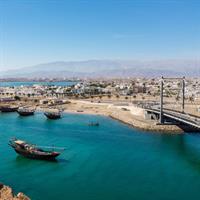
Overview
The coastal city of Sur, Oman, is renowned for its independent spirit, having been one of the last settlements to come under the Sultan's dominion. This seafaring heritage has fostered a community of entrepreneurial Omanis, with many of the Sultanate’s largest and most influential corporations founded by Sur’s citizens. Despite its low profile, the city’s wealth is evident, showcased by rows of beautiful mansions lining its streets. In the past decade, Sur's prosperity has been further enhanced by the discovery of natural gas and oil off its coast.
Visitors to Sur will find plenty of sights to warrant an overnight stay. The city boasts its own Corniche, the Sultan Qaboos Grand Mosque, a bustling local souq, and a rocky outcrop with watchtowers guarding the port's entrance. Sur is a must-see destination for anyone interested in Oman’s rich cultural heritage, offering ancient ruins, lighthouses, stunning beaches, and friendly locals. Whether you're a history enthusiast, a nature lover, or simply seeking a relaxing vacation, Sur is a city that will leave a lasting impression on any traveler.
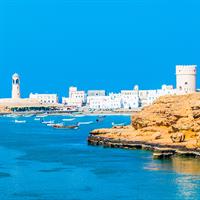
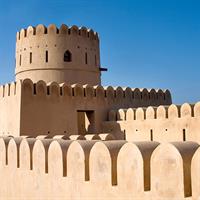
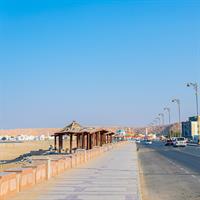
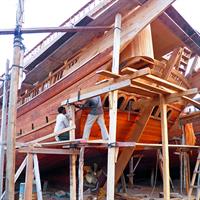
Things to See and Do
Visit the Famous Lighthouse of Sur. Built in 1864 to protect ships traveling to and from the port of Sur, it has a one-of-a-kind design with a spiral staircase leading to the top. It has played an important role in Oman’s maritime history throughout its history. The lighthouse was also important in the development of Sur, as it drew many merchants and traders to the port. Climb to the top to enjoy panoramic views of the Gulf of Oman and the surrounding areas.
Explore the Sunaysilah Castle. Standing on a mound much closer to the sea and harbor, the Sunaysilah Castle is a 350-year-old castle that looks far out to sea and provides a beautiful view over Sur. It’s a simple design with a square outer wall and round towers. Inside the castle, the entrance hall opens onto a spacious square with only a few rooms, suggesting that the castle was intended for short-term use.
Another historic site, the Bilad Sur Castle sits inland in the residential and date garden area. The castle is recognizable by its unusually shaped tower, with a turret on top that dates from the early 19th century. It is a stunning example of traditional Omani architecture and an important part of the country’s cultural heritage. The castle served as a defensive fortress and residence for the local governor and played an important role in the history of the region. The castle is open for visitors to explore its many rooms and halls while learning about the region’s history and the castle’s role in it.
Enjoy a stroll through the Dhow Harbor and Corniche. Located at the oldest part of Sur, the gorgeous Sur Corniche is one of the most popular places in the city. Spread across four miles, Sur Corniche offers a picturesque view of the wooden dhows, or boats, that occupy the harbor nearby. From here, you may also spot the ancient watchtower situated across the bay in the rural settlements of Al Ayjah. The inlet side of the Sur Corniche gives a great view of the skyline dominated by beautiful mosques.Read More
On the edge of Sur’s lagoon on the Corniche just south of the suspension bridge are the boatyards is the Shipbuilding yards. The keels and hulls are made from teak imported from India, while the ribs are made from local wood. No plans are ever used: the boats are built by eye, from the outside in, with any and every gap, of which there may be many, plugged by a specifically cut piece of wood. Unfortunately, though the site is interesting, there is no information available about the boats at all. A small room near the entrance to the yards has souvenirs for sale.
Check out the Fatah Al Khair Centre, a sailing dhow that was built in 1951 in Sur and was the last boat of its kind to be constructed. The dhow stands in an open-air plaza, along with other traditional boats, and overlooks Khawr Al Batah. The adjacent building, the Fatah Al Khair Centre, gives an overview of the region’s maritime heritage, through displays of boats, photographs and videos; all information is both in Arabic and English.
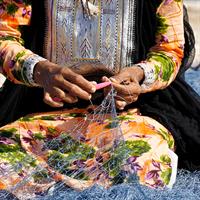
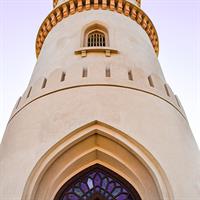
History & Heritage
Sur, an ancient trading port and major center for the frankincense trade, was strategically located on the Gulf of Oman, making it ideal for commerce with civilizations like Mesopotamia and the Indus Valley. Nearby, the ancient city of Sumhuram, believed to have thrived as a significant frankincense trading hub during the 3rd century BC, adds to the region's historical significance.
Sur boasts a rich maritime heritage, renowned for its shipbuilding industry since the 16th century. It played a crucial role in the naval expansion of the Omani Empire. Today, the city's traditional dhow-building yards are still operational, highlighting Sur's continuing importance as a boat-building center in Oman.
Despite recent development and modernization, Sur retains its traditional charm and cultural heritage. The Old Souk, a vibrant market, offers visitors a glimpse into Oman's traditional lifestyle. Additionally, tourists can explore the historic city of Sumhuram by boat or visit the Sur Heritage Village to delve deeper into the city's rich history and culture.
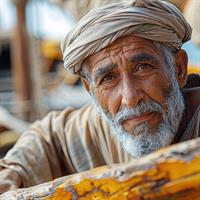
People of Sur
The people of Sur are proud of their heritage and known for their warm hospitality, making the city a must-visit for those interested in Oman's cultural and historical legacy. Sur's culture is deeply intertwined with its historical roots, with traditions passed down through generations evident in daily life, from food and clothing to social customs and traditions.
Traditional dress in Sur reflects this rich cultural heritage. Men typically wear the dishdasha, a long, white, collarless gown that reaches the ankles, paired with a kuma headscarf. Women often wear the abaya, a long, black, loose-fitting dress, along with a headscarf. These traditional garments are still commonly worn by the people of Sur, especially during special occasions and festivals, showcasing their strong appreciation for their customs.